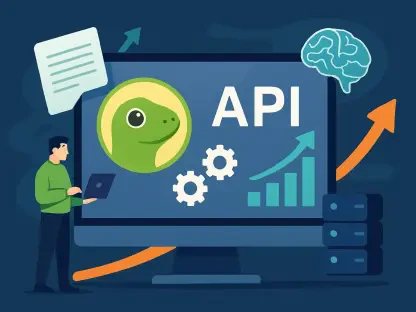As cloud spending continues to climb, the discipline known as finops (financial operations) has emerged as a critical strategy for managing and optimizing cloud investments. This is no longer news. Finops has been a discipline and a toolkit for years. The core promise of finops is immensely appealing: Achieve radical cost optimization, enhance operational efficiency, and ultimately drive measurable business value. In the real world, many organizations struggle to realize this promise. There’s a troubling trend that the ROI for many finops initiatives is falling far below expectations. In some cases, a dollar invested in finops delivers a mere 30 cents in actual savings. What’s going wrong?
Dismantle the Barriers Between FinOps and Engineering
One of the most significant challenges in developing and implementing effective finops practices is the lack of integration between the finops and engineering teams responsible for building and deploying cloud applications. McKinsey’s report showed that many organizations struggle to capture savings beyond the immediate finops team’s mandate because these teams often lack the incentives or access to critical cloud cost data. Consequently, many well-meaning optimization efforts fall by the wayside as engineers juggle multiple priorities or lack the resources to focus on cost-related improvements.
The key to overcoming this barrier is to integrate finops principles into engineers’ workflows. This means providing the engineering team with real-time cost visibility, actionable insights, and accountability for resource consumption. When engineers are empowered with this information, they can make informed decisions that directly impact cloud costs. Moreover, fostering a collaborative culture between finops and engineering teams ensures that everyone is working toward the same cost optimization goals. Bridging this gap requires clear communication, shared objectives, and a commitment to integrating financial accountability into the cloud development process.
Adopt FaC to Move Beyond Reactive Cost Management
Another significant hurdle in realizing the full potential of finops is the lack of systematic implementation of best practices. This is where FaC (finops as code) becomes essential by incorporating finops processes directly into application configurations to make them foolproof. FaC can dramatically reduce costs by integrating financial management principles directly into the infrastructure management life cycle. Organizations can enforce budget constraints by automatically identifying opportunities for cost reduction, supporting more efficient resource scheduling, and employing cloud-native services to decrease operational cloud resource expenses.
By embedding finops best practices into the software development and deployment pipeline, enterprises can move beyond reactive cost management and towards proactive cost control. Automation and policy enforcement play a crucial role in this transformation. Engineers do not need to manually monitor costs or take corrective actions; instead, the system automatically enforces cost-saving measures based on predefined policies. This level of automation not only ensures consistency but also frees up valuable human resources for more strategic tasks, thereby creating a more efficient and cost-effective operation.
Develop and Consistently Enforce a Robust Tagging Strategy
A common pitfall for many organizations is the failure to implement a robust tagging strategy. Tags are crucial for assigning resource costs to specific teams or projects, which fosters accountability and enables detailed reporting. Without an effective tagging strategy, it becomes nearly impossible to track cloud expenditures accurately or identify areas for optimization. This lack of visibility can lead to uncontrolled cloud spending and missed opportunities for savings.
Ensuring all resources are tagged correctly is the first critical step in developing and enforcing a robust tagging strategy. This will enable precise cost allocation, detailed reporting, and effective chargeback mechanisms. Regular audits and checks are necessary to ensure compliance with established tagging protocols. Adopting automated tools that enforce tagging policies can help maintain consistency and accuracy, making it easier to identify and address any discrepancies. A well-implemented tagging strategy not only facilitates better financial management but also promotes a culture of accountability and ownership among teams.
Regularly Identify and Eliminate Underutilized Resources
Many organizations struggle with basic cloud hygiene practices. They’re not effectively identifying and eliminating obvious sources of waste, such as underutilized resources, oversized virtual machines, and redundant storage volumes. Regularly identifying and eliminating these underutilized resources is vital for maintaining cost efficiency and ensuring that cloud spending aligns with actual usage.
Right-sizing virtual machines to match actual workload requirements is essential to optimize storage usage and minimize unnecessary expenditures. This involves regularly monitoring resource utilization and making adjustments as needed to avoid over-provisioning or under-utilizing resources. Implementing automated tools that can dynamically adjust resources based on real-time demand can further enhance efficiency and cost savings. Additionally, regular reviews and audits of cloud resources can help identify and address potential areas of waste, ensuring that cloud investments are being utilized effectively.
Carefully Select FinOps Tools That Provide Granular Visibility
As cloud spending continues to rise, the discipline known as finops (financial operations) has emerged as an indispensable strategy for managing and optimizing cloud investments. This development is not breaking news. Finops has been both a discipline and toolkit for years. The primary promise of finops is highly attractive: Achieve significant cost optimization, improve operational efficiency, and ultimately drive measurable business value. However, in reality, many organizations struggle to realize this promise. There’s a worrying trend that the ROI for many finops initiatives is falling far short of expectations. In some instances, an investment of one dollar in finops results in savings of only 30 cents. So, what’s going wrong? This discrepancy suggests that despite the appeal and potential of finops, implementing it effectively is proving to be more challenging than expected. Achieving the desired cost reductions and operational efficiencies requires not just the adoption of finops practices but also a deeper understanding and better execution of these practices within organizations.









